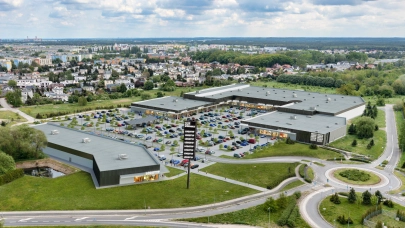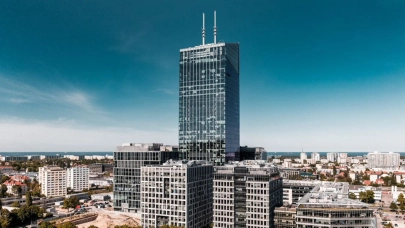
This year is likely to be the best for the Polish warehouse and industrial market, predicts Savills, with leasing activity already setting an all-time high in Q1-Q3 2020. Occupier take-up predominantly came from food retailers operating without any disruption despite restrictions imposed on other retail sectors and from e-commerce, including logistics operators serving e-retailers.
In the first nine months to September 2020, warehouse and industrial take-up set an all-time high for the first three quarters of a year, reveals Savills latest report. The leasing transaction volume hit 3.7 million sqm, representing a 33% increase on the same period last year. The third quarter alone saw 1.3 million sqm transacted (up by 50% year-on-year), which is also an all-time high for the July-September period.
Savills notes that contrary to some fears in the early days of the pandemic and office market trends, the record take-up figures were hardly boosted by massive renegotiations of lease agreements. Even excluding lease renewals, the transaction volume was the highest on record.
According to Savills, 2020 is shaping up to be an absolute record year with its total annual leasing volume likely to surpass the 2017 peak of close to 4.3 million sqm. This year’s take-up is only around 615,000 sqm short of this level, which is well below the quarterly average in recent years and is very likely to be achieved.
“The very good health of the warehouse market is hardly surprising given the boost provided by the pandemic to the supercharged growth of e-commerce. So far in 2020, the strongest demand for warehouse space has come from the food sector, which has been less affected by lockdown restrictions, and the logistics industry supporting online retail,” says Kamil Szymański, Head of the Industrial Agency at Savills in Poland.
Poland’s total warehouse and industrial stock surpassed the 20 million sqm mark, reaching 20.3 million sqm at the end of September 2020. The country’s five core markets account for close to 80% of that stock, but Tricity is on its way to join this group, says Savills. The Tricity region already contains over 815,000 sqm of warehouse and industrial space, but given the development pipeline, its total stock will soon increase to almost 1 million sqm.
Unlike the record-breaking take-up, the volume of space under construction has decreased. Poland saw over 1.7 million sqm built in the first three quarters of 2020, representing a 16% fall year-on-year (-24% y-o-y in Q3 alone). The volume of warehouse space underway was also down (-16% y-o-y and -19% q-o-q). At the end of September, the development pipeline stood at 1.5 million sqm. In the first three quarters of 2020, the largest volumes of new warehouse and industrial space were delivered in Warsaw and Upper Silesia, i.e. regions with the highest concentration of development activity, says Savills.
“Developers have scaled down speculative construction without pre-lets. This approach is warranted given the challenges facing sectors hit by the lockdown. However, with their land banks and ability to deliver new projects within a short timeframe, developers will be able to quickly respond to tenants’ requirements if robust demand continues next year,” concludes Kamil Szymański, Savills.
The industrial market vacancy rate averaged 8.2% at the end of September, up by 1.6 percentage points quarter-on-quarter. Rental rates remained largely unchanged throughout Poland, with headline rents at €2.70–4.40/sqm/month for big-box facilities and at up to €5.50/sqm/month for small business units (SBUs).



